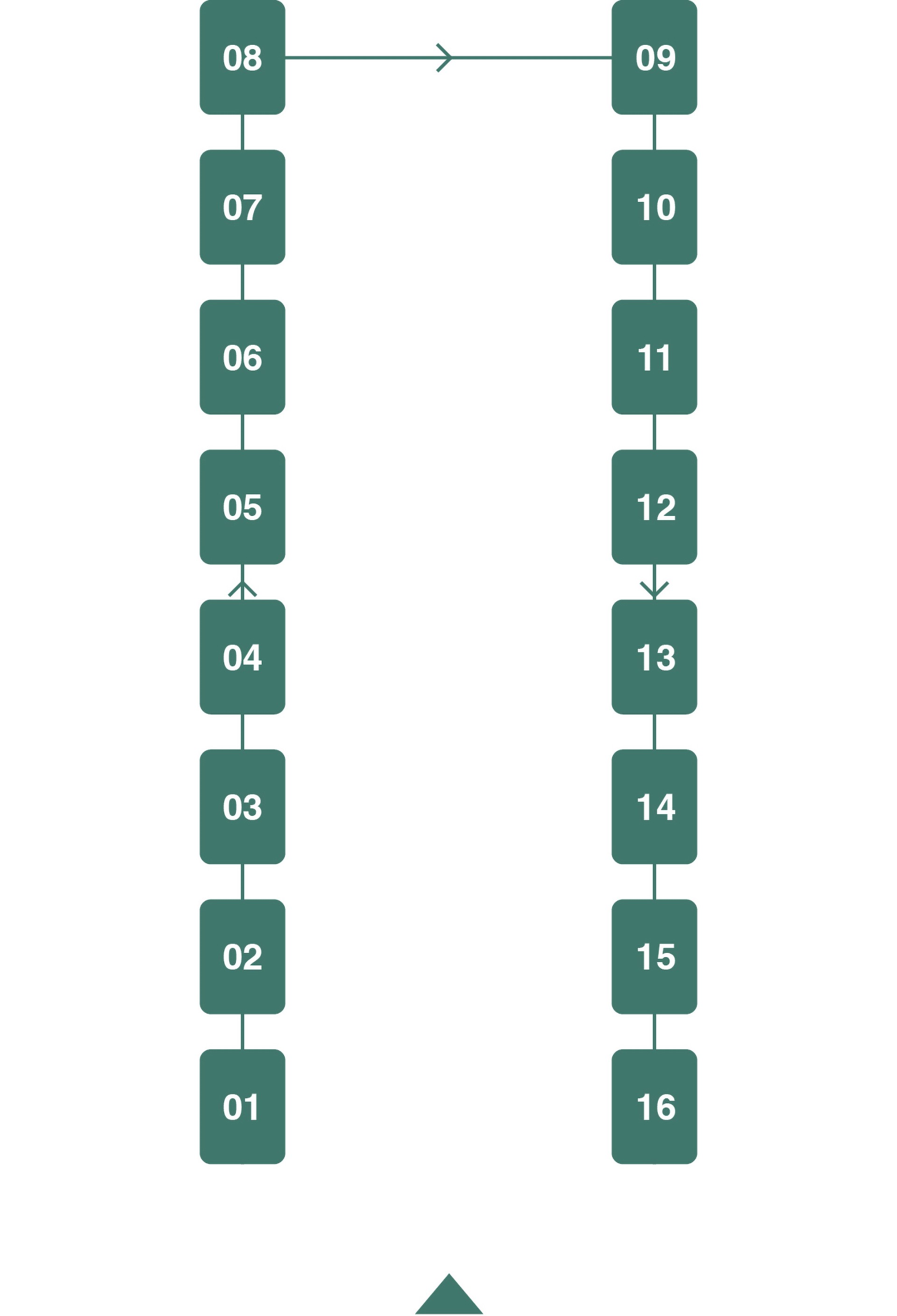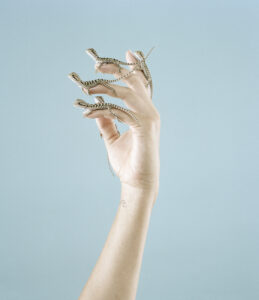
MYTHOLOGIES
Albino pythons wrap themselves around the wrists of diaphanous muses, snow-white barn owls soar through the air and cats with an evanescent glow cast magnetic glances into the lens: Petrina Hicks’s images reveal an instinctual and magical dimension, a reality beyond the boundaries of the visible, in which the promise of perfection that captures our attention in the Australian photographer’s seductive aesthetic cracks and overturns, leaving us disoriented.
Who are these white ghostlike creatures, these winged messengers of the night, these small age-old dragons perching on a female fingertip?
What secrets lie hidden inside the ancient vases? And who is the enigmatic Pandora holding them?
In the mythology that Petrina Hicks constructs and evokes through constant references to classical antiquity, we not only perceive the unravelling of the illusory nature of perfection, but also the poetic and political claim to a space in which animals and humans reconnect and recognize their mutual individuality as they observe each other.
By rewriting myths, such as the story of Medusa or of Adam and Eve, and by choosing animals with strong symbolic connotations (snakes, wolves and birds) as co-protagonists in her shots, Hicks alludes to the complexity of woman’s identity and to the spiritual nature of her relationship with animals. For the photographer, animals are closer to the “divine” than humans, because they exist in a state of pure awareness, and women are closer to animals because they are more capable of understanding that we exist within the same single continuum.
The recurrence of the women-animal pairing – symbolic counterparts in a game of mirrors and projections – is by no means accidental. According to the hegemonic logic of patriarchal science, women and animals are traditionally considered non-rational beings, to be controlled and dominated. From a feminist standpoint, the domination of nature rooted in the post-medieval and Western male mindset is the underlying cause of animal cruelty, as well as of the exploitation of women and the environment. On the other hand, speciesism — which arbitrarily assumes that humans are more important than other life forms — is a concept borrowed from feminism and minority theory. It is comparable to sexism and racism because it favours one group (humans, males, white people) over another. The solidarity and strong ties between women and animals are therefore explored in depth in female literature and in various feminist studies.
While male culture is based on man’s control over nature, the two bodies – that of the woman and that of the animal – can instead come together, just as we see in the images by this artist. In Petrina Hicks’s works, the woman is a medium in the intimate con-fusion with other species, capable of exchanging silent kisses with a butterfly on the wing and respecting the spirit of the other creatures, recognizing the ability to feel emotions that is shared by all living beings.

Hercules, 2021
---------------------------------------------------------------------

Cosmos, 2018
---------------------------------------------------------------------

Nautilus, 2023

Nautilus, 2023

Armour I, 2023
---------------------------------------------------------------------

Armour II, 2023

Rattlesnake Blues, 2016

Rattlesnake Blues, 2016
---------------------------------------------------------------------

Mother of Wolves, 2021

Mother of Wolves, 2021

Mother of Wolves, 2021
---------------------------------------------------------------------

Lauren and Monk, 2018

Peaches and Velvet, 2018

Venus & Apollo, 2010
---------------------------------------------------------------------

Gloss, 2011
---------------------------------------------------------------------

The Unbearable Lightness of Being, 2015
---------------------------------------------------------------------

Ouroborous, 2019
---------------------------------------------------------------------

Cleopatra, 2019

Persephone, 2015
---------------------------------------------------------------------

A Woman Carrying Water, 2015

Venom, 2015
---------------------------------------------------------------------

A Woman Carrying Water, 2015

Venom, 2015
---------------------------------------------------------------------

Minerva, 2015
---------------------------------------------------------------------

Thorny Spine, 2023

Serpentina I, 2015

Melo Melo, 2019

Lauren and Python, 2018
---------------------------------------------------------------------

Venus, 2013

Mooncat, 2019

Cecaelia, 2023

Ruby, 2023
---------------------------------------------------------------------


